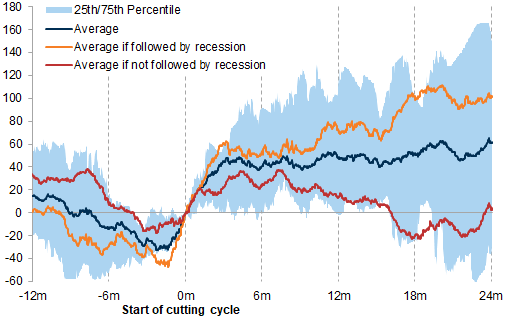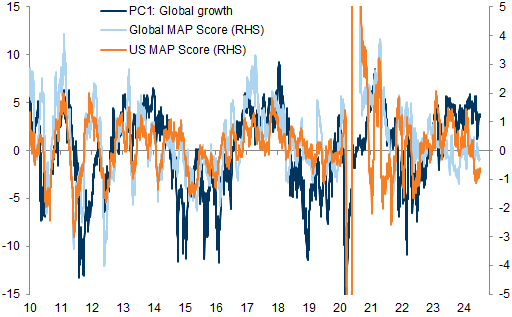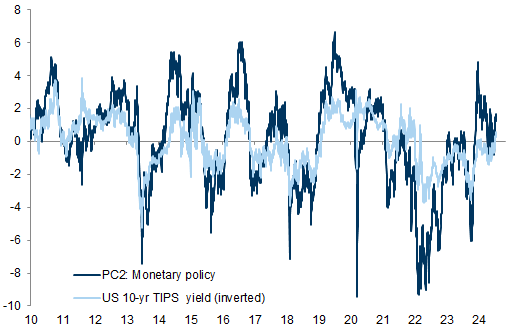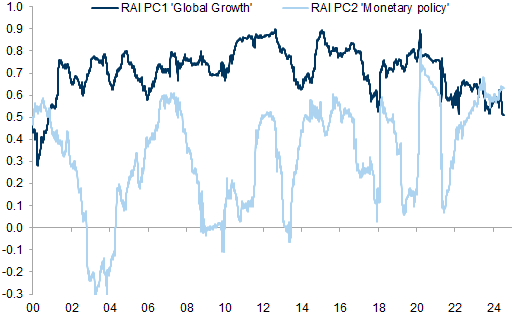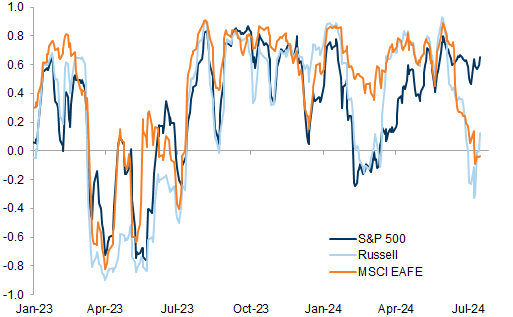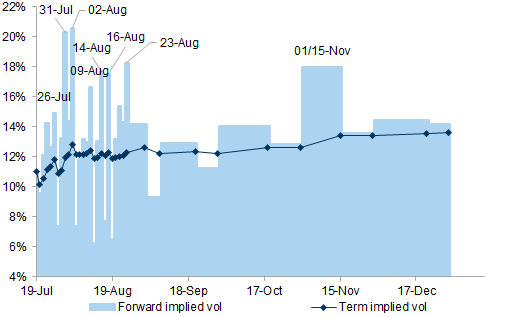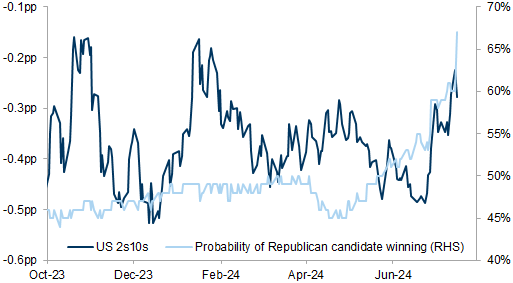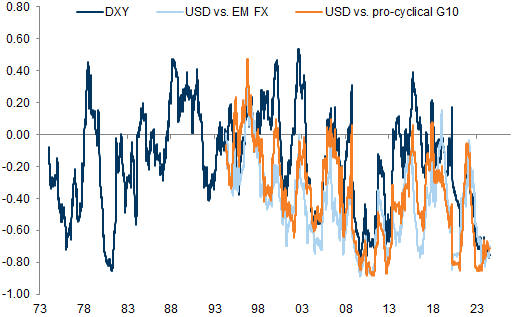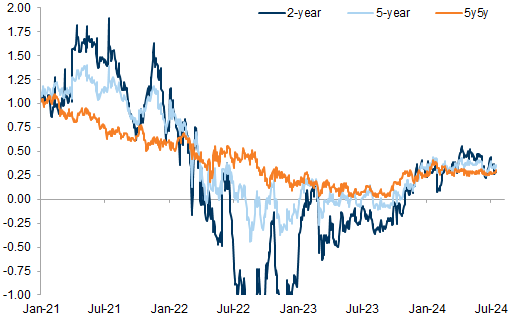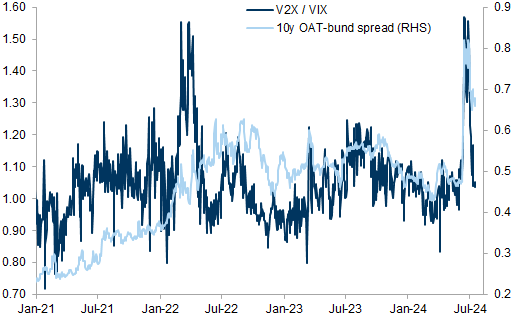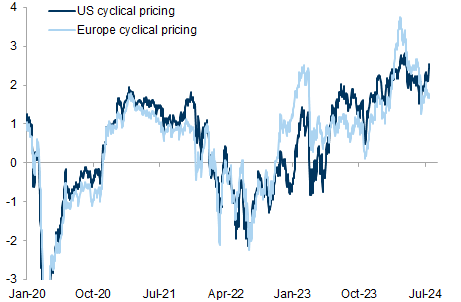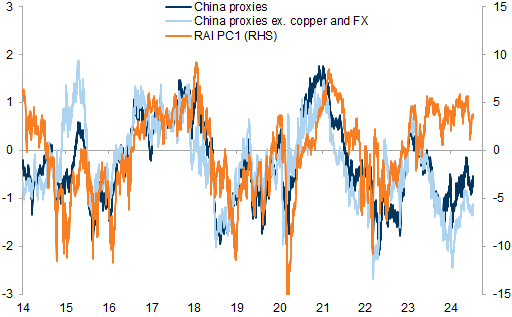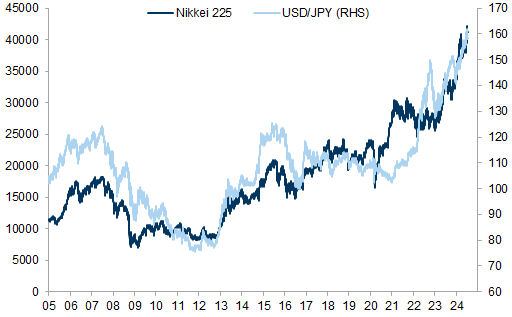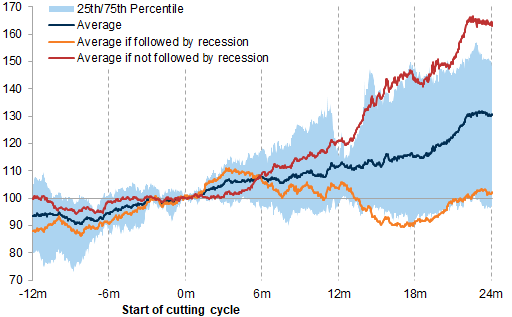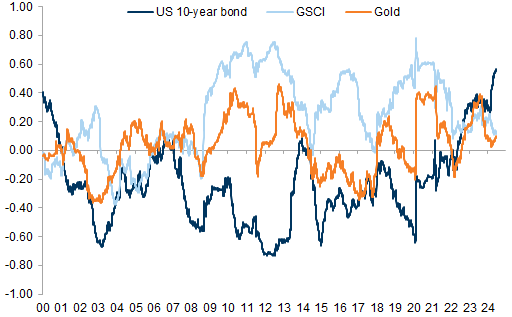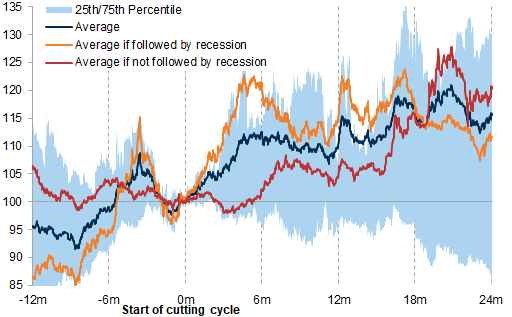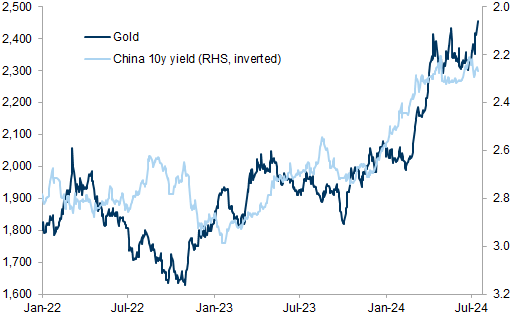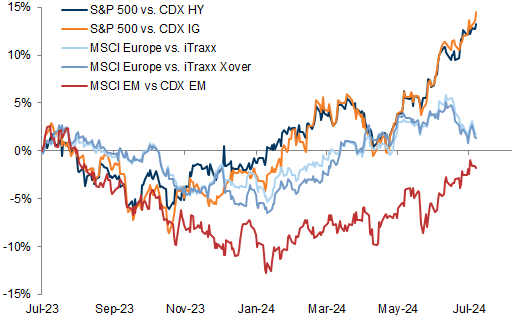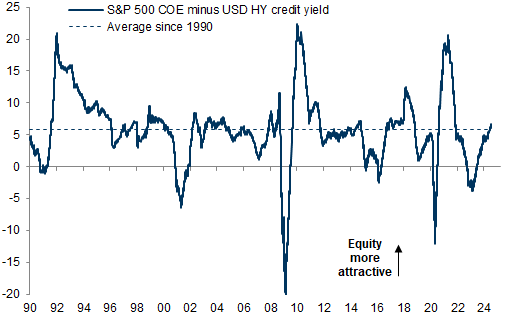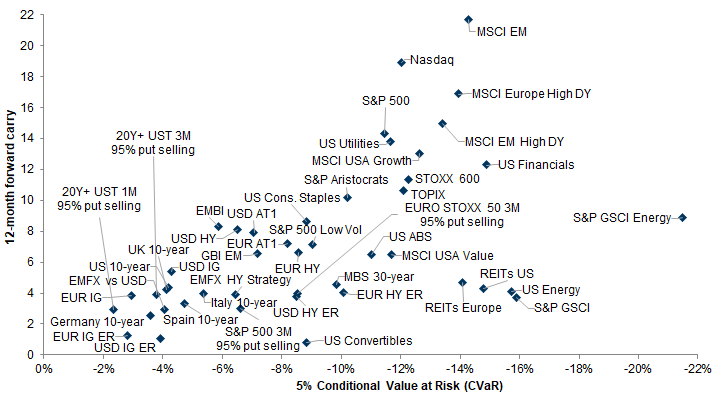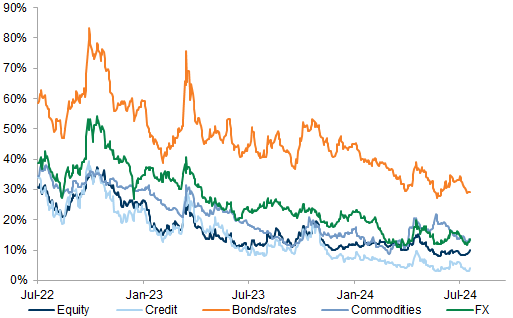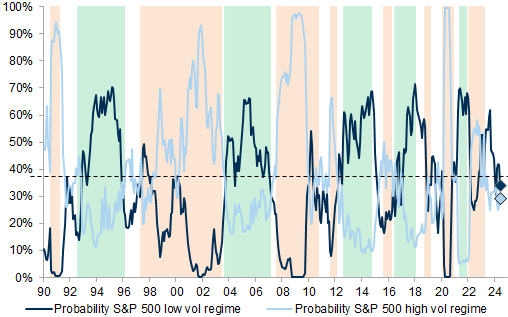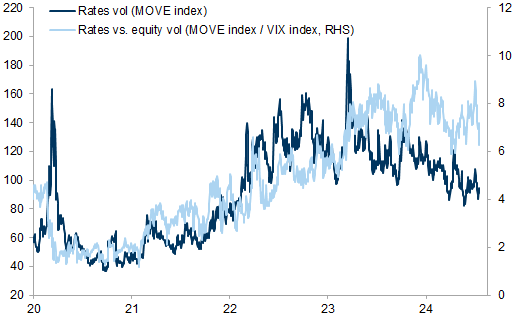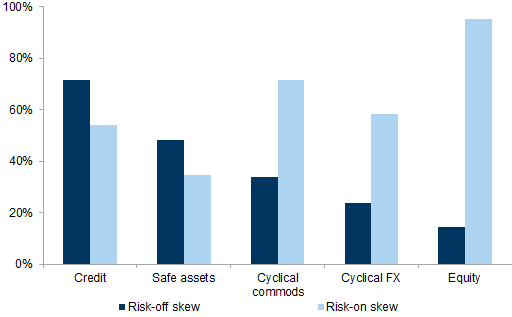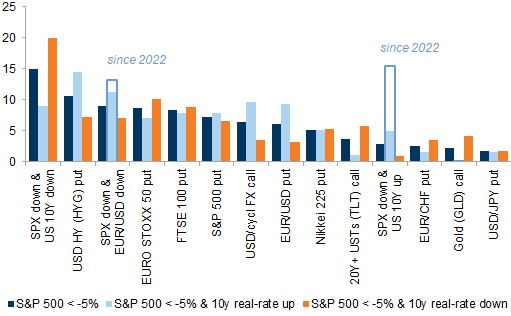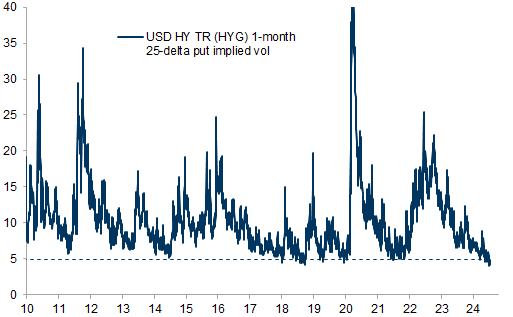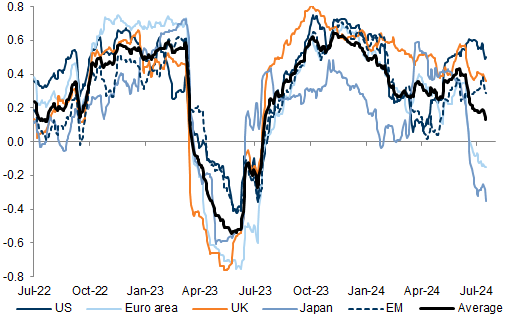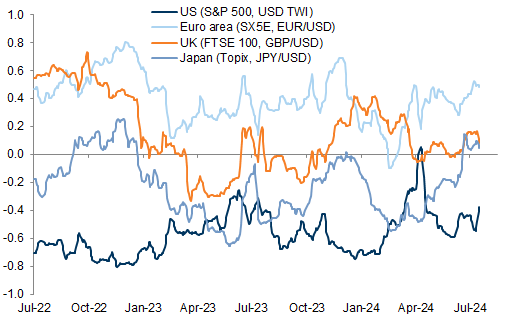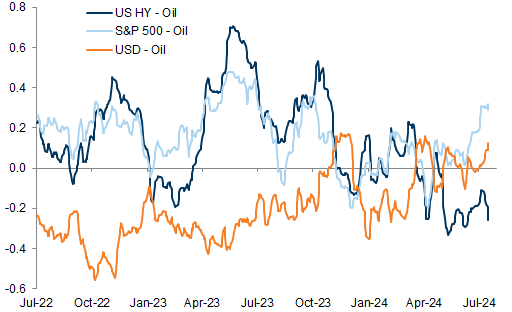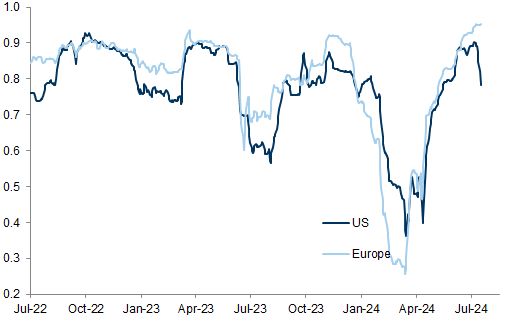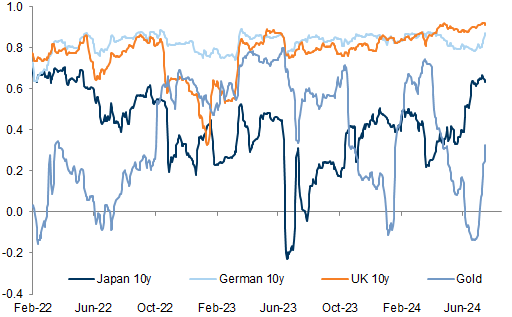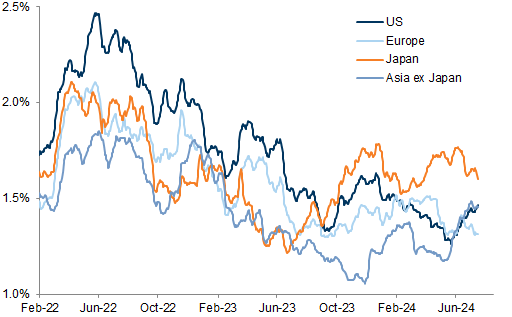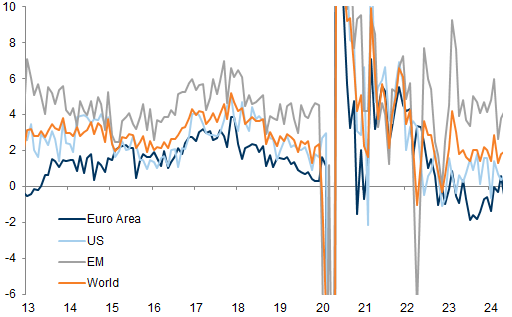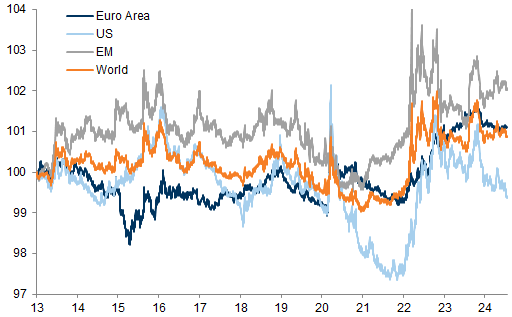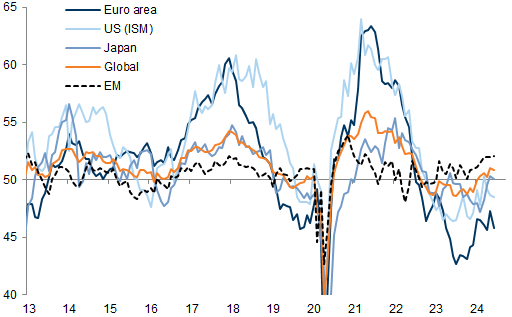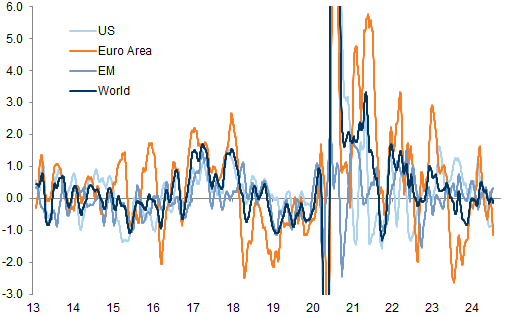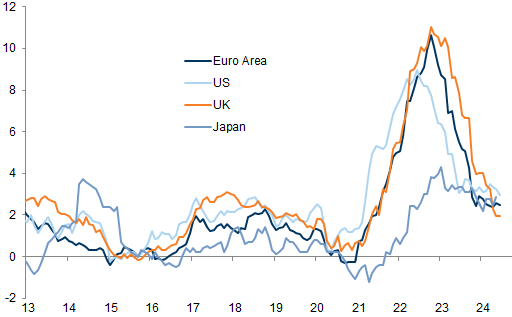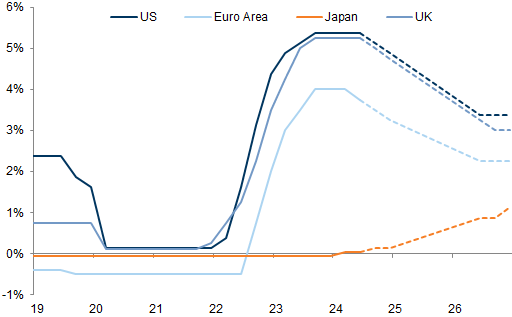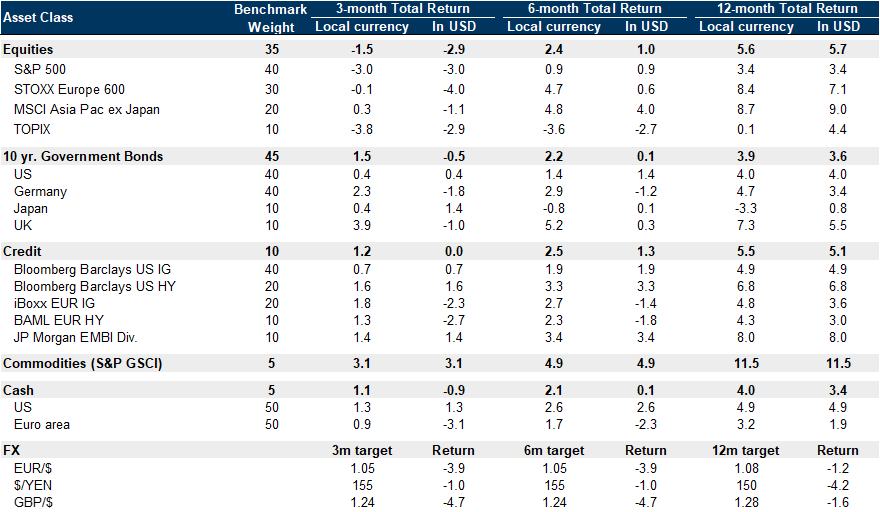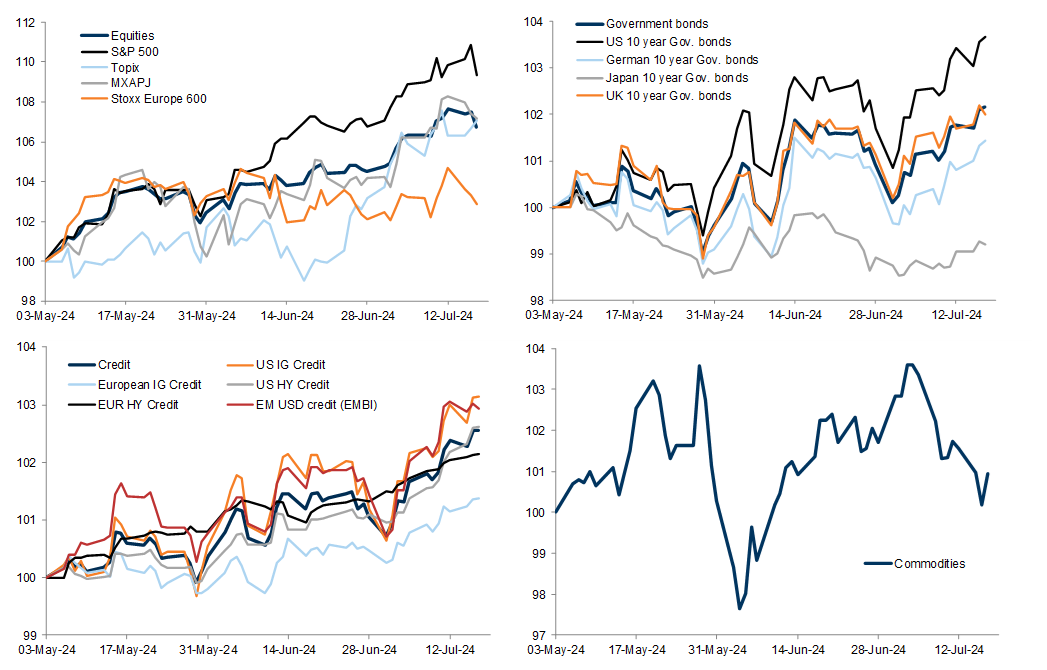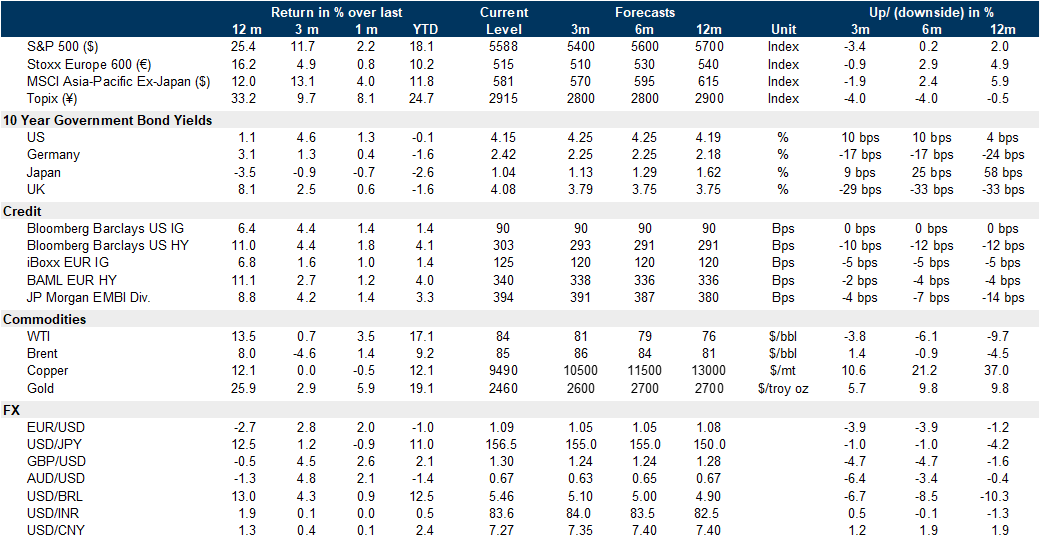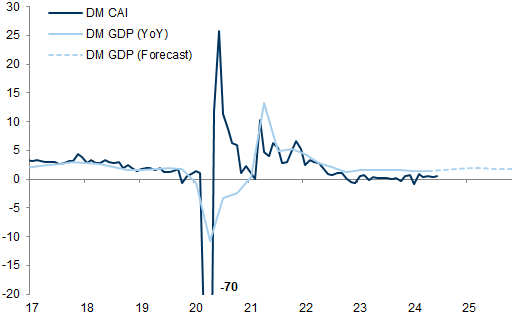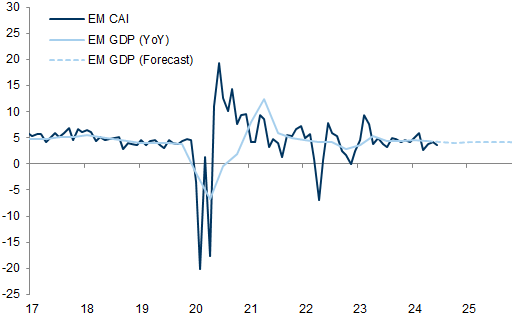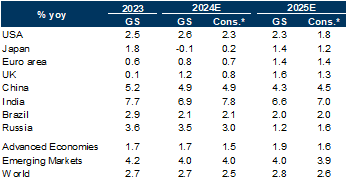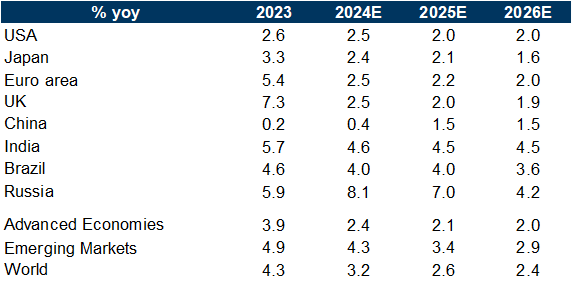Global growth slowed in Q2 but risky assets performed well, helped by expectations for central bank easing and mega cap tech optimism. Our macro baseline view for 2H remains friendly with a small pick-up in growth, further inflation normalisation and central bank cuts. We continue to think we are in an early late-cycle backdrop, which could last considering a healthy private sector, and as a result both recession and bear market risk have been low.
However, after a strong rally in equities in 1H we see risk of a setback in the summer due to the combination of weaker growth data, already more dovish central bank expectations and rising policy uncertainty into the US elections. As a result, we shift Neutral across assets on a 3-month horizon. We remain mildly pro-risk for 12m with an OW equities/commodities, N bonds/cash, UW credit.
So far 'bad news' has been 'good news' for equities and risky assets more broadly, with more expectations of central bank easing. Fed easing cycles have been generally positive for equities as long as growth was good. But 'bad news' could become 'bad news' if there is less of a buffer from monetary policy or 'bad news' becomes too bad. A much weaker global growth backdrop, disappointing Q2 earnings season and rising US policy uncertainty can weigh on risk appetite.
Still, we see more risk of a correction rather than a bear market for 2H. Only when our cycle growth score shifted below zero, which has historically been mostly around recessions, did equities have drawdowns in excess of 20%. With only some growth slowdown, a healthy private sector and a buffer from central bank easing, equity drawdown risk should be limited.
While we do not see much equity valuation expansion from here in our base case, central bank cuts, continued AI optimism and a potential growth re-acceleration in 2H could support multiples, especially for laggards. Credit valuations are a more binding constraint and we think the sector composition is worse than for equities due to a larger weight in leveraged cyclical/value sectors.
We think the equity/bond correlation will be less positive with continued inflation normalisation and bonds should buffer severe growth shocks. For additional diversification in a late-cycle backdrop and with rising policy uncertainty, we remain OW commodities on a 12m horizon and we recommend selective option overlays.
2H Outlook: Shifting neutral into the summer but we remain mildly pro-risk for 12m
Exhibit 2: Aggregate positioning and sentiment indicators are again quite bullish
Exhibit 3: Percentiles of sentiment indicators are elevated
Exhibit 4: Equity futures positioning remains elevated with S&P 500 funding spreads elevated
Exhibit 5: From elevated levels of S&P 500 futures positioning, near-term returns are negatively skewed
Exhibit 6: We expect growth to remain strong with further inflation normalisation and material policy easing
Exhibit 7: Global macro surprises have been more negative since Q2
Exhibit 8: Equities have outperformed bonds despite a rise in the unemployment rate
Exhibit 9: Equities tend to consolidate late cycle but performance dispersion is large
Exhibit 10: Unless the growth score drops below zero, equity drawdown risk is relatively limited
Exhibit 11: Markets are again pricing more Fed cuts in the next 12 months
Exhibit 12: Other latent recession indicators have mostly priced out risk YTD
Exhibit 14: Bonds yields tend to decline but less so if growth remains strong
Exhibit 15: The US yield curve generally steepened around the start of Fed cutting cycles
Exhibit 16: Growth optimism across assets has started to decline with more negative macro surprises
Exhibit 17: RAI PC2 has declined alongside rising real yields since the beginning of the year
Exhibit 18: S&P 500 sensitivity to monetary policy shifts has been more important than to growth optimism
Exhibit 19: Equity/bond correlation has started to decrease
Exhibit 20: Implied volatility is still pricing rising risks into the US elections
Exhibit 21: US yield curve has steepened with a rising probability of a Republican win
Exhibit 22: The Dollar remains a key hedge for rate shock risk in multi-asset portfolios
Exhibit 23: US traded inflation has increased vs. EMU
Exhibit 24: European political risk premium has declined again
Exhibit 25: Procylical pricing across assets has declined more in Europe recently
Exhibit 28: Commodity performance around Fed cutting cycles is particulary sensitive to growth
Exhibit 29: Commodities can help diversifiy in the event of a rate shock and policy risks
Exhibit 30: Fed cutting cycles can be very supportive for Gold if followed by weaker growth
Exhibit 31: Gold has benefitted mainly from China demand YTD
Exhibit 35: Implied volatility across assets is low and has declined YTD
Exhibit 36: The likelihood of an S&P 500 low vol regime has declined
Exhibit 37: Rates vol has declined again vs. equity vol
Exhibit 38: Risk-off skews remains unusually low in equities
Exhibit 39: Value in equity down, rates or FX down hybrids and European equity puts
Exhibit 40: Implied volatility of USD HY credit (HYG) is close to all-time lows
Cross-asset correlation: Equity/bond correlations have declined again
Exhibit 41: 3m rolling equity/bond correlation of weekly returns
Exhibit 42: 3m rolling equity/FX correlation of weekly returns
Exhibit 43: 3m rolling commodity price correlation of weekly % changes with different assets
Exhibit 44: 3m rolling equity vol/CDS correlation of weekly level changes
Macro monitor: US FCI easing and negative macro surprises
Exhibit 47: Current Activity Indicators (CAI)
Exhibit 48: Financial Condition Indices (FCI)
Exhibit 49: Manufacturing PMIs
Exhibit 50: Macro-data Assessment Platform
Asset class forecast returns and performance since last GOAL
Key macro forecasts
Exhibit 56: DM GDP growth vs. GS CAI and GDP forecasts
Exhibit 57: EM GDP growth vs. GS CAI and GDP forecasts
Investors should consider this report as only a single factor in making their investment decision. For Reg AC certification and other important disclosures, see the Disclosure Appendix, or go to www.gs.com/research/hedge.html.















